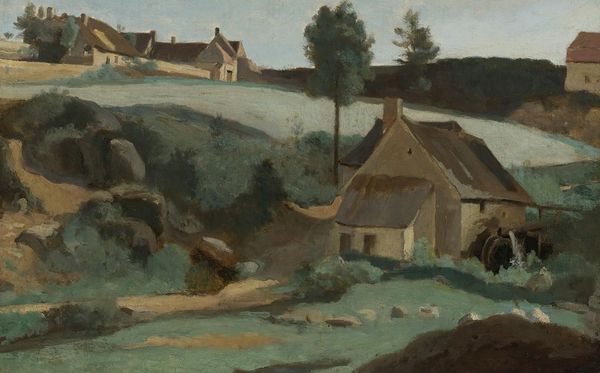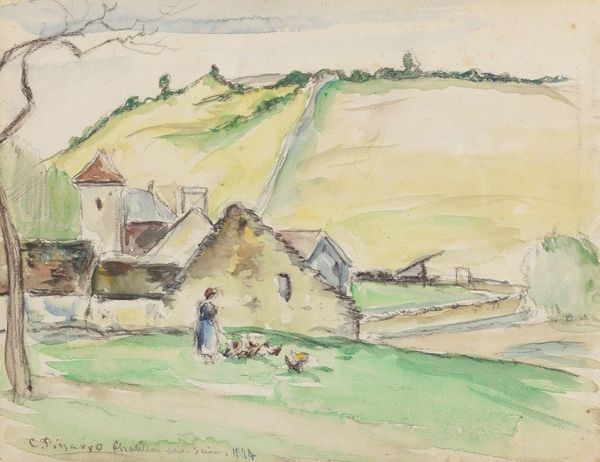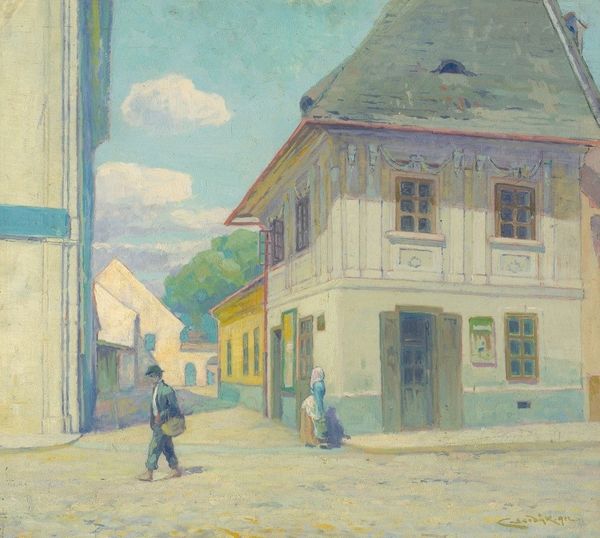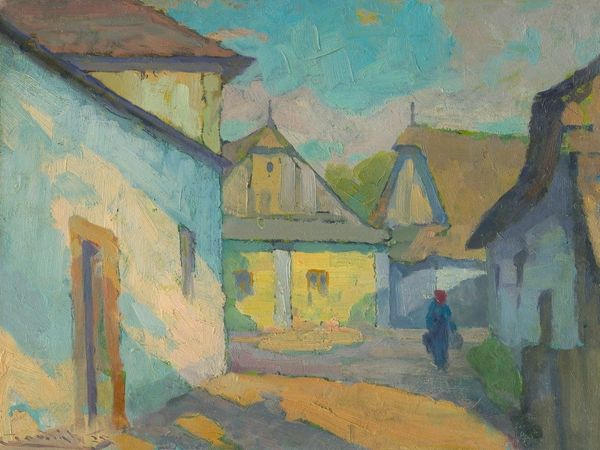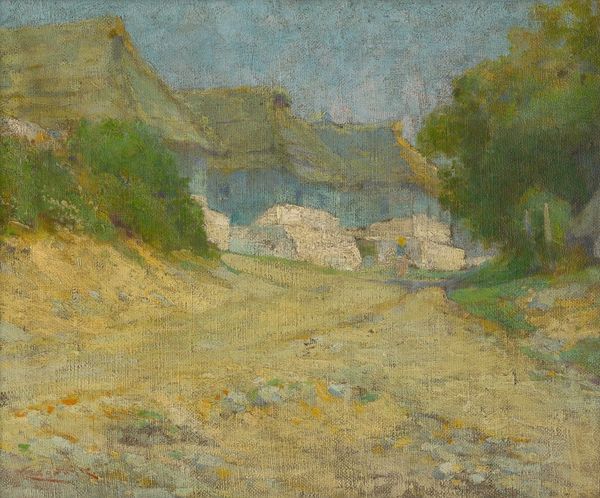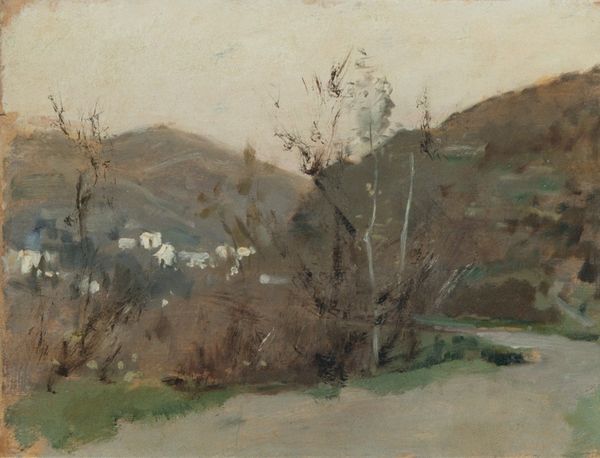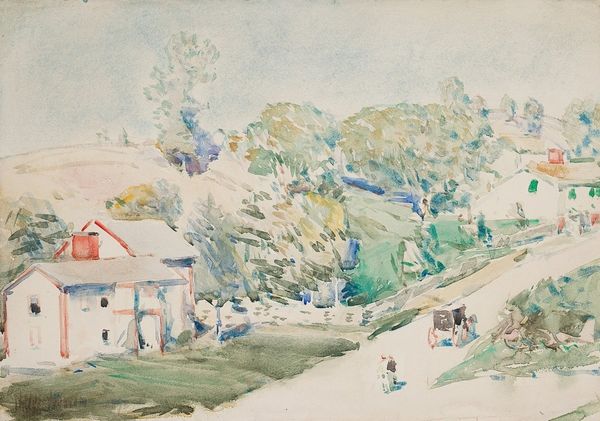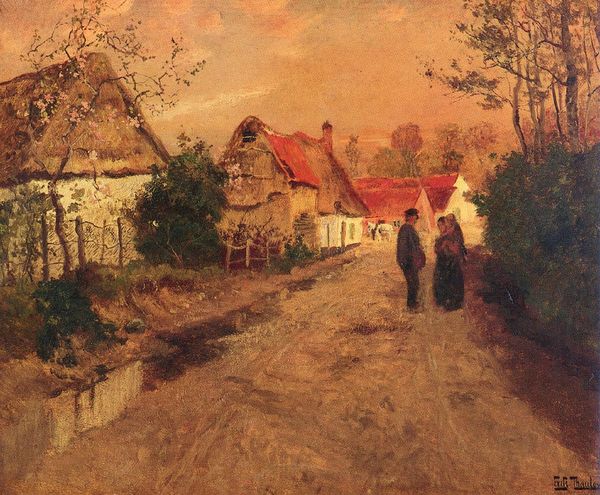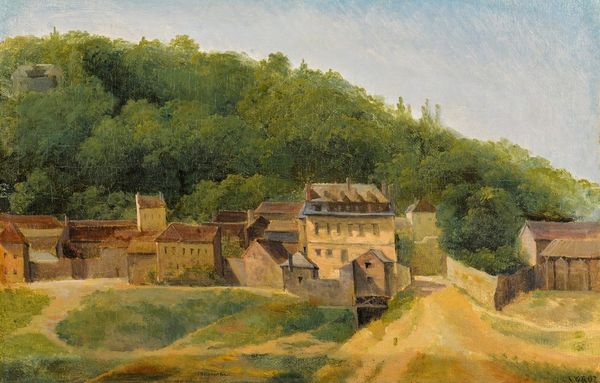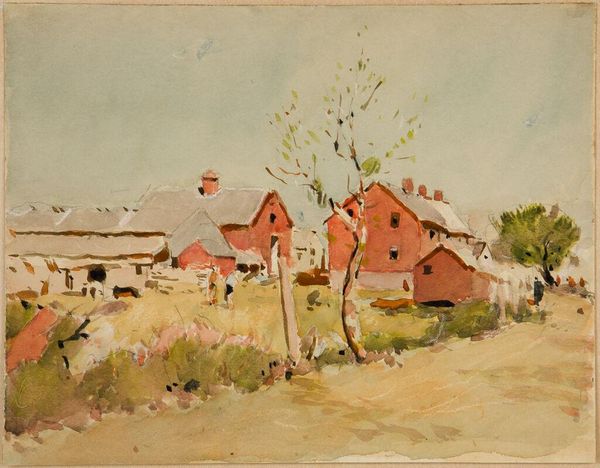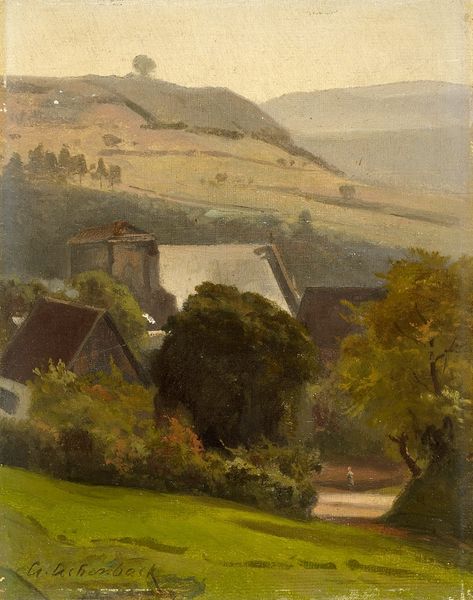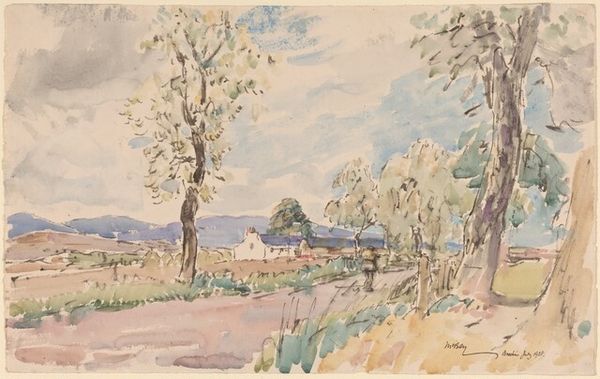
Copyright: Public Domain: Artvee
Editor: This watercolor is titled "Krásnohorské podhradie" by Ľudovít Čordák, made sometime between 1925 and 1930. I'm struck by how delicate the colors are and how the composition leads my eye up to the castle in the distance. What do you see in this piece from a formal perspective? Curator: I observe a strong emphasis on planar construction. Notice how Čordák uses subtly different washes to articulate depth, especially in the buildings and the landscape, thus reducing dimensionality to geometric forms on a flat surface. Editor: So you're saying he's less interested in creating a realistic depiction and more in exploring shapes and colors? Curator: Precisely. Consider how the white of the buildings almost merges with the sky, creating a flattening effect. The lines, even in the rendering of figures, contribute to an overall compositional arrangement rather than serving pure representational functions. Would you agree? Editor: I do. The figures are just hinted at; their forms are less defined than the architectural elements, like visual accents on a plane. Is the muted palette typical for the artist's landscapes? Curator: It underscores the emphasis on form rather than vibrant color, thus reinforcing a controlled exploration of shapes within a restricted tonal range. By analyzing this we see it isn’t just a scene, but a study in structure and composition. Editor: I’m beginning to appreciate the careful consideration of spatial relationships in this landscape and to realize how each shape affects the overall design, giving equal weighting to sky, buildings, and land. Curator: Indeed. Focusing on the elements within the painting invites a deeper engagement, beyond the merely representational. We observe how he balances tones and textures, bringing us closer to the essence of landscape as artistic form.
Comments
No comments
Be the first to comment and join the conversation on the ultimate creative platform.
